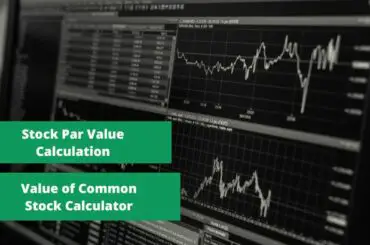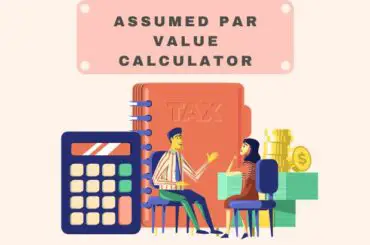Information presented on this web page is intended for informational and educational purposes only and is not meant to be taken as legal, financial, investment or tax advice. We do not accept any responsibility for any trading or investment related losses. Please review our disclaimer on before taking action based upon anything you read or see.
We often attempt to tackle the value for money when we purchase. Overall, it’s preferable to obtain the most value for your money. At this point, the Price Per Volume Calculator will aid you immensely.
When purchasing things from a store, it may sometimes be difficult to determine if a larger bundle is a better deal. Fortunately, you can determine which package offers the most goods for the money by looking at the item’s unit price per volume.
The unit price is the cost per unit of the product you purchase. The amount might be given per thing or per measurement type, such as ounces, grams, gallons, or liters.
You may divide the product’s cost by the amount you’ll get to determine the Pricing Per Volume unit price. You may also look at the shelf label at the shop. Then, evaluate which offers the best value by comparing the unit costs of two or more sets of the same product. If this seems tedious, then the Price Per Volume Calculator will aid you greatly. Come along as we highlight this below.
What is Price Per Volume Calculator?
An online tool that allows you to compare items of different volumes and costs is the Price Per Volume Calculator. Consider yourself at a store trying to determine which item has the best bargain and the lowest profit margin, but you have no idea how to go about it. Then it would help if you used this tool.
Consider the scenario when you need to purchase flour because you are craving pancakes. You have two options at the store: a smaller package that costs $1 for 1 kilogram and a bigger one that costs $1.35 for 1.5 kg. Which one is the wiser purchase? You know that the unit cost for the smaller box is $1, thanks to the Price Per Volume Calculator. At the same time, it costs 90 for the bigger box.
Thus, the calculator estimates your additional costs if you had purchased the same amount of a smaller item at the unit price.
The price per volume information is included on the price tag in various nations and retailers. So, if you investigate more closely, you could find that the Price Per Volume Calculator is unnecessary. Even yet, you can get into circumstances when that isn’t the case, such as when the topic of pricing comes up in a discussion.
How to use the Price Per Volume Calculator?
Using a unit price (UP) per unit volume, the Price per Volume Calculator determines the cost to purchase or sell a volume (A) of a product (B).
These instructions will help you utilize the price per volume calculator:
- Choose your volume units, such as gallons or cubic centimeters.
- Type the money units in.
- Type in the quantity of the product to be purchased or sold (A).
- Enter the unit volume’s unit price (UP) (B).
- Enter the unit volume that costs the unit price (UP).
- The Price per Volume calculator will do the necessary unit conversions and determine how much it will cost to purchase A for B. The cost will be shown in US dollars (USD).
Price Per Volume Calculator
Why do you need a price per volume calculator?
For the following reasons, a price per volume calculator is necessary:
Decision-making is simple
A price per volume calculator may assist you in selecting a brand. Store brands and lesser-known national names sometimes have lower prices than well-known ones. The sole distinction between the cheaper brands may be how they appear. Make careful to verify the ingredients by looking at the panel under “Contents Facts” on the product label.
Improved financial planning
You may manage your future finances more effectively by utilizing a price per volume calculator. The amount and volume you could incur when purchasing might help you establish your monthly or annual budget.
Adaptable buy
You may tweak and edit your purchases using a price per volume calculator until you find a balance that works for you. Due to this, you may somewhat select and personalize your spending without putting in a lot of work.
Simple and practical
Some individuals may believe using a price per volume calculator is challenging. But it’s fairly simple. One must access the website, input the necessary data, and press the “calculate” button to use the calculator.
A time-saving tool
The time saved by using a price per volume calculator is enormous. The price per volume calculator eliminates the need to make several contacts with various product providers by enabling you to quickly determine the price per volume of many items on the market.
Pros & Cons of Price per Volume
Some Pros & Cons of Price per Volume have been highlighted in the table below:
| Pros | Cons |
| It draws in a larger audience | Customers may end up underestimating your goods |
| It offers reasonable costs | It produces a reduced value price |
| It aids in increasing product sales for marketers | There is a possibility of human error |
| It tempts consumers to purchase more | Limited to multi-product operations, |
| Your competitive value is increased. | |
| Offers explanatory perspectives | |
| Supports good decision-making |
Frequently Asked Questions
What is price volume?
The price volume price is an indicator used to assess the equilibrium between a product’s quantities demanded. The share price trend’s percentage change reveals the relative supply or desire for a certain product. At the same time, the volume shows the trend’s driving power.
How do you find the price per item?
You can find the price per item through the following steps:

Step 1: Determine the item’s overall cost.
Usually, the unit price represents a small portion of the product’s overall cost. To determine the item’s total cost, check the price tag or use a price scanner.
Before figuring out the unit price, deduct the coupon value from the total cost if you have one.
Step 2: Determine how much of the item is in the packaging.
To determine how much product is in the container, check the label. The packaging often has a quantity indication in the bottom right corner.
Some goods will be offered individually, including toilet paper, paper towels, or pencils. But most things will have a measurement, such as an ounce, a cup, a pint, a gallon, a milliliter, a liter, etc.
The cost of the product will be the unit price if the product is available per item or unit.
Step 3: Verify that the units of measurement on both goods are the same.
The things you’re comparing may sometimes measure their amount in various ways, for example, ounces against grams or quarts versus gallons. If so, adjust the unit of measurement for one of the items to match the other before figuring out the unit rate.
Step 4: To get the unit price, divide the total cost by the number of units.
To figure out the unit pricing, use your phone or a calculator. Divide the total cost by the amount using long division if you’re performing the arithmetic by hand.
A simpler alternative is to utilize an online price per volume calculator. You may input the item information into these calculators, and they will then calculate the unit cost. On this page, there is also a unit pricing calculator.
How do you read price and volume?
You can read price and volume in the following ways:

Confirmation of Trend
Increased volume is expected in a growing market. To keep prices up, buyers must continue to buy in greater quantities and with more enthusiasm. Price increases and volume declines could be signs of disinterest. And this is a signal that a turn might be coming. It may be challenging to comprehend this.
However, it is a basic reality that a price change (or increase) on little volume is not a reliable indication. Large volume pricing changes (or increases) are a greater indicator that the nature of the commodity has changed.
Volume and Exhaustion Moves
We may see depletion movements in both rising and declining markets. Typically, there are large increases in volume along with these dramatic price changes. This may be the beginning of a trend’s demise. At market peaks, individuals who waited and are concerned about losing out on more of the move pour in, depleting the pool of purchasers.
Falling prices at a market bottom ultimately drive a lot of traders away. Volatility and volume rise as a consequence. After the surge in volume in these circumstances, we will see a decline. The other volume rules, however, may be used to examine how volume develops over the next days, weeks, and months.
Reversals in Volume and Price
If the price starts to range after making a significant upward or downward move with minimal price movement and strong volume, this may be a sign that a reversal is about to take place. Additionally, pricing will now shift about volume.
Volume History
It is important to consider the volume of recent price history. You could get useless information if you compared volume to pricing 50 years ago. The likelihood of recent data sets being more relevant increases.
How do you combine price and volume?
Using the volume Price Trend Indicator, you may mix price and volume. This volume indicator aids in identifying both the direction and magnitude of a product’s price change.
A cumulative capacity line that adds or deducts a multiple of the trend’s percentage growth and present product price volume makes up the indicator. Typically, this is predicated on the product’s inclination to go upward or downward.
This indicator calculates the cumulative volume and tells traders how much money flows through a product.
- Below is a summary of the VPT interpretations:
- A rise in price and volume confirms the higher pricing trend.
- A drop in price and volume confirms the declining pricing trend.
A negative dispersion is a price rise followed by a flat or declining volume trend. This shows that the price movement is weakly moving downward and may turn around.
Positive divergence occurs when the price trend decreases while the volume trend rises or remains stable. This shows that the price movement is weakly rising and may change direction.
A recent chart using the VPT indicator is shown below:

Expert Opinion
Price per volume is a crucial piece of knowledge that buyers and sellers require to make money. The variable expenses and fixed costs spent by a manufacturing process are divided by the units produced to determine the price per volume.
Although this cost should decrease somewhat as unit volumes grow owing to better volume discounts, indirect costs, such as direct materials, generally change with the number of quantities manufactured.
No matter how many units are produced, fixed expenses, such as building rent, should stay constant, albeit they may go up if more capacity is required. Calculating all of this might be not easy. Thus, the Price Per Volume Calculator will aid you greatly.
References





